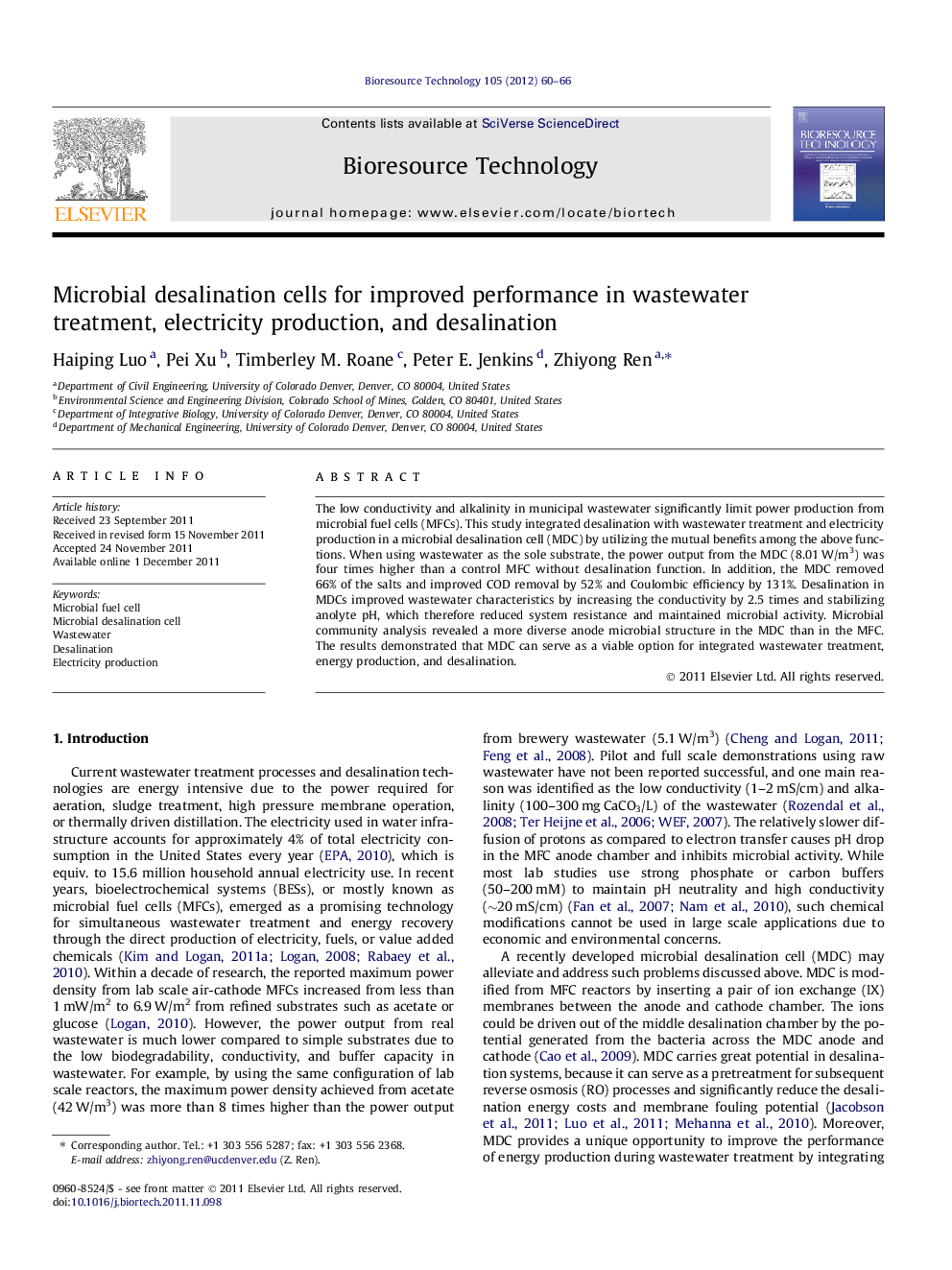| Article ID | Journal | Published Year | Pages | File Type |
|---|---|---|---|---|
| 681588 | Bioresource Technology | 2012 | 7 Pages |
The low conductivity and alkalinity in municipal wastewater significantly limit power production from microbial fuel cells (MFCs). This study integrated desalination with wastewater treatment and electricity production in a microbial desalination cell (MDC) by utilizing the mutual benefits among the above functions. When using wastewater as the sole substrate, the power output from the MDC (8.01 W/m3) was four times higher than a control MFC without desalination function. In addition, the MDC removed 66% of the salts and improved COD removal by 52% and Coulombic efficiency by 131%. Desalination in MDCs improved wastewater characteristics by increasing the conductivity by 2.5 times and stabilizing anolyte pH, which therefore reduced system resistance and maintained microbial activity. Microbial community analysis revealed a more diverse anode microbial structure in the MDC than in the MFC. The results demonstrated that MDC can serve as a viable option for integrated wastewater treatment, energy production, and desalination.
► Demonstrated a new system for integrated waste treatment, energy production, and desalination. ► Significantly increased system performance through the integration of three complementary functions. ► Analyzed the mutual benefits among the 3 different functions in BESs. ► Elucidated the effects of ion transfer on the MDC anode electrochemical and microbial activities.
